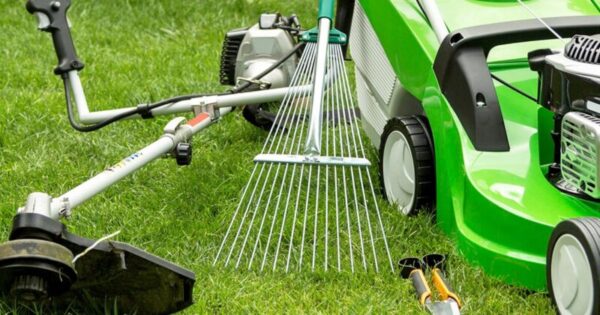Achieving a perfectly level lawn requires some effort and patience, but the results are well worth it. A level lawn not only looks great but also provides a smooth and safe surface for various outdoor activities. Here are some tips and tricks to help you master the art of lawn leveling for a flawless yard:
Assess Your Lawn:
Start by assessing the current state of your lawn. Identify areas that are uneven or have low spots. These low spots are often caused by settling, erosion, or the natural contours of your yard.
Choose the Right Time:
The best time to level your lawn is in the early spring or early fall when the grass is actively growing. Avoid leveling during extreme heat or drought conditions.
Gather the Necessary Tools and Materials:
You’ll need the following tools and materials:
- Shovel or spade
- Garden rake
- Wheelbarrow
- Topsoil or sand (depending on your soil type)
- Leveling tool (such as a lawn roller or a leveling board)
- Grass seed
- Fertilizer
Remove Excess Grass:
Start by cutting the existing grass in the uneven area as short as possible without scalping it. This will make it easier to work with the soil beneath.
Fill Low Spots:
In areas with low spots, fill them with topsoil or sand until they are level with the surrounding ground. Use a shovel to distribute the material evenly, and then pack it down with a garden rake.
Level the Soil:
Use a leveling tool, such as a lawn roller or a leveling board, to smooth out the filled areas and make them flush with the rest of the lawn. Roll or drag the leveling tool across the soil until it’s level.
Seed and Fertilize:
Spread grass seed evenly over the leveled area and lightly rake it into the soil. Follow the recommended seeding rate for your chosen grass type. Then, apply a starter fertilizer to promote healthy grass growth.
Water and Maintain:
Water the newly seeded area regularly to keep the soil consistently moist until the grass is established. Be patient; it may take a few weeks for the new grass to grow.
Mow Carefully:
Once the new grass has reached a mowing height, be cautious when mowing over the leveled area to avoid disturbing the young grass. Use a sharp mower blade and avoid cutting more than one-third of the grass height at once.
Regular Maintenance:
Continue to care for your lawn by fertilizing, watering, and mowing regularly. Over time, the leveled area should blend seamlessly with the rest of your yard.
Prevent Future Issues:
To prevent future leveling needs, address any drainage issues that may have contributed to the unevenness of your lawn. Proper grading and drainage solutions can help maintain a level yard.
Consider Professional Help:
If your lawn has extensive leveling needs or if you’re unsure about the best approach, consider consulting a professional landscaper or lawn care service for expert advice and assistance.
Achieving a flawless, level lawn takes time and effort, but with the right techniques and consistent maintenance, you can enjoy a beautiful and even yard for years to come.





